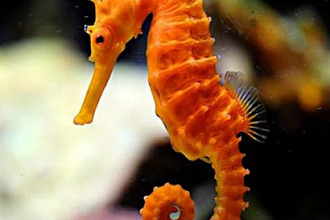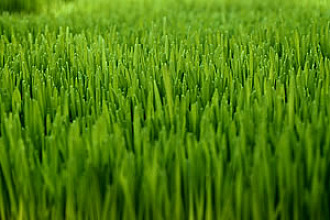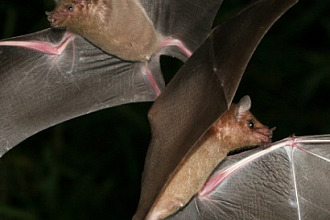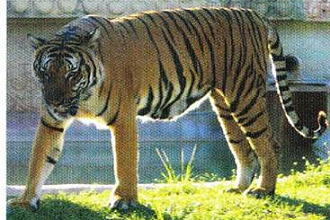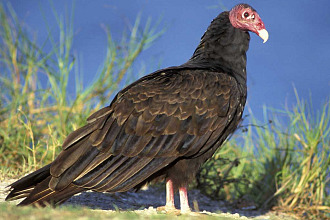All 400 million dogs (the four-legged, domesticated type) running around in the world, have the same features in their paws: all have been given (not by accident, of course) four toe pads with claws positioned below the toes as well as an additional pad in the center, which work together with the other pads as shock absorbers.
But I particularly like the additional small "stopper pad" that is just slightly higher up on the back of their front legs. It's perfect for slowing them down or stopping them when they are on slippery surfaces making a mad dash after something important to them. The Creator knew their personalities so well, He knew they needed that!
A dog's hearing has certain facets that surpass human abilities. For example, a dog can check out sounds reaching his ears with a sensitivity level that a person is not capable of matching both at the high and low end of the frequency range. AND, a dog can adjust the position of his ear (one ear at a time, in fact) in a manner we might liken to an antennae, using eighteen or more available muscles to tilt, rotate, raise or lower his ear. How about that for not-by-accident specialized but standard equipment?!
But you probably already know the special instinct a dog has that is "off the charts" in comparison to human ability: it's their Creator's not-by-accident gift relating to their sense of smell—their sniffing-using the olfactory cortex in their brain. The human brain is dominated by the visual cortex. But if we were to compare the size of the human brain and its olfactory bulb with the size of a dog's brain and its olfactory bulb—we would see that the dog's olfactory bulb is 40 times larger in comparison to that of a human. Why did the Designer place such emphasis on the sense of smell for a dog? Because, with the nose, a dog gets readings on its surroundings and can detect amazing information not simply for their own emotional and physical info about other dogs—since odors to them are like reading a morning newspaper for information—but when specially trained, dogs also can help find hidden drugs, explosives, and even lost children—following scents that might be several days old. All because God gave them a really large nose for news!
Their cooling system is quite different from ours also—and it is not by accident they were not given sweat glands. They don't need them! Their cooling system (thermoregulation) involves evaporating water through their nasal cavities. As a result of the process they are able to survive in every type of climate. They breathe in through their noses to stay cool. Their nasal glands secrete a fluid which evaporates within their nasal chambers to create the cooling effect. When the air temperature gets warmer, or they get warmer due to physical exertion, they secrete even more of the fluid than normal. Then, to cool down, they begin to pant with open mouths to bring in more oxygen and help speed up the evaporation and cooling process. They could be thankful for their tongue which then seems to be falling out of their mouths as it's all part of the operation—increasing the surface area where the evaporation can take place!
The coat of many four-legged creatures in the Canidae family (that dogs belong to) includes a not-by-accident extra layer, so in cold climates—that coat provides insulation to retain heat on a cold day, puffing up to trap warm air in cold weather or held closely against the skin to release heat on warm days! Incidentally, the oversized ears of some dogs maximize heat loss in a desert—while tiny ears minimize the effect of frigid weather on dogs in the North. We can all be thankful for the ingenuity God gave humans who breed dogs to serve specific needs. Whether for protection, play, herding or serving the blind—it seems there is a dog that is the right companion for each of us. And, in fact, soon we'll meet our King, the Original Designer, when He returns to take us to His home. Then one day He'll reign right here and it will be a thrill to enjoy our pets while we have their Creator nearby to answer all our questions!
"NOT BY ACCIDENT" (c) Juanita Kretschmar is used by permission and was first published in the book "Not By Accident 3 page 15










